
Are Music Headphones a Workplace Hazard?
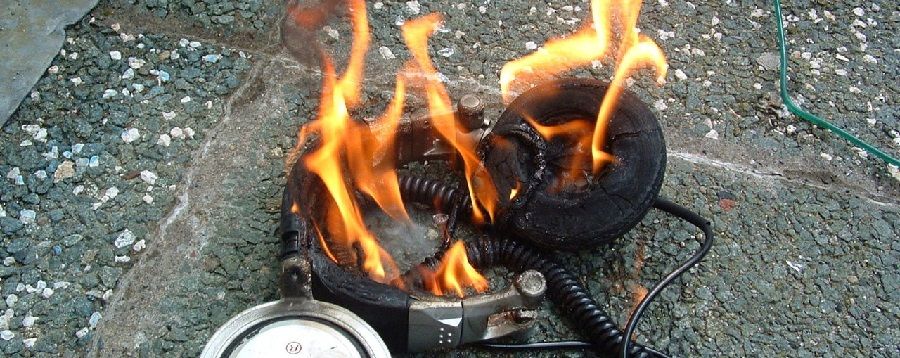
We’ve all heard about the dangers of distracted driving. Now studies have documented the dangers of distracted walking. An article published in Injury Prevention concludes that headphones used with handheld devices may pose a safety risk to pedestrians, especially in environments with moving vehicles.
Another study found that 1,500 pedestrians were treated in emergency rooms for cell-phone related incidents, including falling off bridges and walking in front of moving traffic (Accident Analysis and Prevention, August, 2013).
It’s not hard to imagine the same is true in work environments such as construction sites, warehouses or loading docks. If music headphones create a safety risk to pedestrians, are headphones a workplace safety hazard?
Researchers from the University of Maryland identified 116 reported deaths or injuries of pedestrians wearing headphones between January 2004 and June 2011. Over half the pedestrians were hit by trains – even though horns or sirens sounded in 29 percent of these incidents. If these pedestrians didn’t hear a train, how many earbud-wearing workers won’t hear verbal directions – or the backup beep of a forklift?
Are headphones a workplace safety hazard?
Smartphones and Bluetooth have replaced MP3 players as standard-issue items for much of today’s population. But portable music players are nothing new. Workers have long used music to combat the boredom of monotonous tasks. Although there is no specific OSHA regulation that prohibits the use of headphones on a construction site or any other workplace, OSHA issued a memo regarding use of music headphones back in 1987:
“Use of Walkmen in noise environments in excess of Tables G-16 and D-1 is a violation. Use of Walkmen over required ear protection is a violation. Use of Walkmen in occupational noise less than Tables G-16 or D-1 is at managerial discretion unless its use causes a serious safety hazard to warrant issuance of a 5(a)(1).”
More recently, in the fall of 2019, OSHA made this statement in a letter of interpretation to an inquiry about listening to music on a construction site:
“Listening to music may produce a safety hazard by masking environmental sounds that need to be heard, especially on active construction sites where attention to moving equipment, heavy machinery, vehicle traffic and safety warning signals may be compromised.”
OSHA has declared that wearing headphones for personal music devices instead of approved noise-cancelling earmuffs is a violation of their terms. In a North Carolina State University study, it was found that if personal music volume is increased to cancel out environmental noise, it can reach decibel levels damaging to the wearer’s hearing. But even worse, it could make them deaf to workplace dangers.
Hearing Safety Signs:
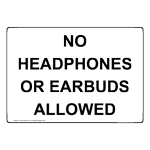 | 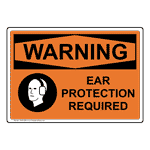 | 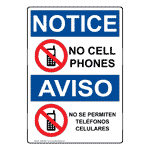 | 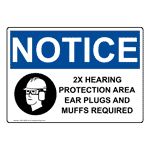 |
Other safety considerations
Beyond the obvious risk of impaired hearing, both wired and wireless earbuds and headphones pose other potential hazards. Loose earbud cords could become caught in machinery or pose an electrical hazard similar to metal jewelry. Workers can be distracted by loose or dropped earbuds. Wearing headphones or earbuds over or under PPE could impact effectiveness. And dropping an earbud into running machinery could create a host of problems.
Although some manufacturers claim their music products are “OSHA approved” or “100% OSHA compliant,” the agency stresses that OSHA “does not register, certify, approve, or otherwise endorse commercial or private sector entities, products or services. Therefore, any such claims by a manufacturer are misleading.”
Unlike U.S. OSHA, the Manitoba Workplace Safety and Health Division has declared music devices a potential hazard because they “impair a worker’s ability to hear surrounding sounds. This is especially true if the user is working around moving equipment or in circumstances where a worker must be able to hear warning sounds. Furthermore, because these devices compromise the user’s general alertness and concentration, they may be considered a hazard at any workplace.”
As with most workplace safety issues, there are many elements to consider. A clear policy governing use of music devices is your best bet.

